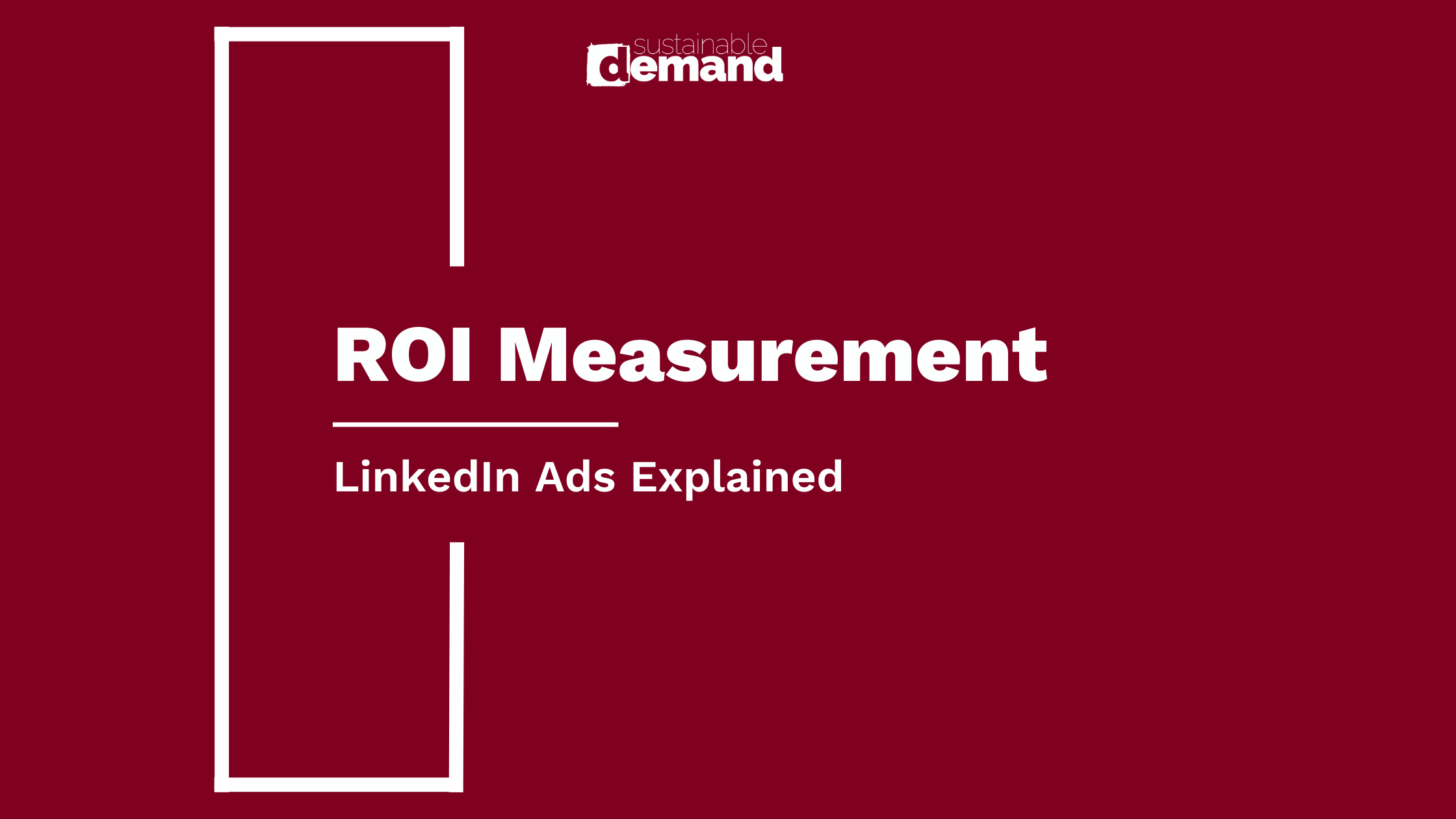LinkedIn Ads | ROI Measurement

In the dynamic world of digital marketing, navigating the intricacies of campaign measurement and optimization remains a crucial challenge. For B2B marketers, unlocking the true return on investment (ROI) potential of LinkedIn Ads is paramount to demonstrating value, maximizing budgets, and achieving marketing objectives. This comprehensive guide delves into the foundations of ROI measurement, equipping you with the knowledge and actionable strategies to transform your LinkedIn Ads campaigns into powerful ROI-driven engines.
The Importance of Measuring LinkedIn Ads ROI
Measuring the ROI of your LinkedIn Ads empowers you to achieve several critical objectives:
1. Demonstrate Value: Quantify the tangible impact of your campaigns, translating clicks, leads, and conversions into revenue figures. This data-driven approach provides compelling evidence to stakeholders and justifies your budget allocation, solidifying your position as a strategic marketing partner.
2. Optimize Performance: By analyzing campaign data, you gain invaluable insights into which elements are driving results and which areas require improvement. This knowledge empowers you to refine your targeting, messaging, and bidding strategies, ensuring your campaigns resonate with the right audience and deliver optimal performance.
3. Make Informed Decisions: Data-driven insights are the cornerstone of informed decision-making. By understanding the ROI of various campaign elements, you can allocate resources effectively, prioritize high-performing strategies, and ultimately maximize your marketing return.
The ROI Measurement Toolkit: Key Metrics for Success
To effectively measure the ROI of your LinkedIn Ads, it's crucial to focus on the right metrics that align with your campaign goals:
1. Cost per Acquisition (CPA): This metric indicates the average cost of acquiring a new customer or lead through your LinkedIn Ads campaigns. It is calculated by dividing your total ad spend by the number of acquisitions. A lower CPA signifies a more efficient acquisition strategy.
2. Return on Ad Spend (ROAS): This metric reveals the revenue generated for every dollar spent on your LinkedIn Ads campaigns. It is calculated by dividing the total revenue generated by your campaigns by your total ad spend. A higher ROAS indicates a more profitable campaign.
3. Click-Through Rate (CTR): This metric measures the percentage of individuals who click on your ad after seeing it. A higher CTR suggests that your ad is capturing attention and effectively communicating your value proposition.
4. Conversion Rate: This metric signifies the percentage of website visitors who take a desired action, such as making a purchase, downloading a white paper, or submitting a lead form, after clicking on your ad. A higher conversion rate indicates that your landing page is effective and your overall marketing funnel is optimized.
Unlocking Maximum ROI: Strategies for Optimization
1. Set SMART Goals: Before embarking on your optimization journey, establishing SMART goals (Specific, Measurable, Achievable, Relevant, and Time-bound) is crucial. This clarity ensures your optimization efforts are directed towards achieving tangible and measurable outcomes.
2. Track the Right Metrics: Choose a core set of metrics that directly align with your campaign goals. For example, if your goal is lead generation, prioritize metrics like cost per lead (CPL) and lead quality. Regularly monitor these metrics to identify areas for improvement.
3. Embrace the Power of A/B Testing: Continuously experiment with different ad variations, targeting options, and landing pages to uncover the elements that resonate best with your audience. A/B testing allows you to compare the performance of two or more variations and identify the winner, ultimately optimizing your campaigns for maximum impact.
4. Leverage LinkedIn Analytics: Utilize LinkedIn's built-in analytics tools to gain deeper insights into your campaign performance. Analyze demographics, interests, and engagement data to understand your audience better. Additionally, explore conversion tracking features to identify potential bottlenecks in your marketing funnel and optimize the user journey.
5. Invest in Continuous Learning: The digital marketing landscape is constantly evolving. Stay updated on the latest trends and best practices for LinkedIn Ads by attending webinars, reading industry blogs, and participating in online communities. This commitment to continuous learning equips you with the knowledge and skills to continuously refine your strategies and maximize ROI.
Adopting data-driven strategies, and embracing continuous learning, you can transform your LinkedIn Ads campaigns into powerful ROI-driven engines. Remember, success in B2B marketing hinges on demonstrating measurable value. By unlocking the true potential of LinkedIn Ads and optimizing for ROI, you can prove the effectiveness of your marketing efforts, secure stakeholder buy-in, and drive sustainable growth for your business.
Actionable Takeaways
- Define clear campaign goals aligned with your overall marketing objectives.
- Select the most relevant ROI metrics based on your goals.
- Utilize a combination of cost, engagement, and conversion metrics for a holistic view.
- Leverage A/B testing to identify the most effective ad creatives and targeting options.
- Optimize your landing pages for seamless user experience and high conversion rates.
- Regularly monitor and analyze campaign performance data.
- Refine your targeting, messaging, and bidding strategies based on insights.
- Stay updated on the latest trends and best practices in B2B marketing and LinkedIn Ads.
By implementing these actionable strategies, you can embark on a journey of continuous improvement, ensuring your LinkedIn Ads campaigns deliver a positive ROI, contribute to your overall marketing success, and ultimately, fuel your B2B growth engine.




